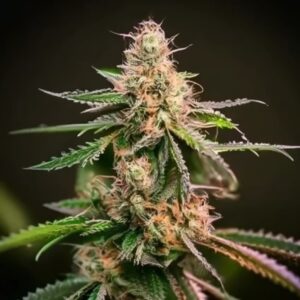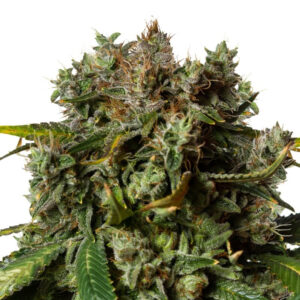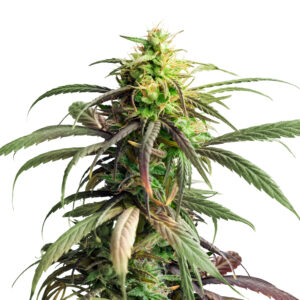 By:
Edit 25
By:
Edit 25
For many new cannabis cultivators, the variety of seed types can be overwhelming. Regular, feminized, autoflower… what’s the difference, and which one should you choose?
If you’ve ever asked yourself what are autoflower seeds, you’re not alone. These special cannabis seeds have become increasingly popular thanks to their simplicity and speed. Unlike traditional cannabis seeds, autoflower seeds bloom automatically—no need to adjust light cycles or follow strict photoperiod schedules.
In this article, we’ll break down exactly what autoflower seeds are, how they work, their pros and cons, and why they’re often the top choice for beginner growers looking for fast, low-maintenance harvests.
To fully understand what are autoflower seeds, it’s important to look at their unique genetics. Autoflowering cannabis seeds are typically a hybrid that includes Cannabis ruderalis, a wild subspecies native to regions with short summers and harsh climates, like Russia and Central Asia.
What makes ruderalis special is its ability to flower based on age rather than changes in light exposure. This trait allows autoflower seeds to begin blooming automatically—usually around 3 to 4 weeks after germination—regardless of how much light the plant receives each day.
In contrast, traditional cannabis strains (like photoperiod feminized or regular seeds) require specific light cycles—typically 12 hours of light and 12 hours of darkness—to trigger the flowering stage. Autoflowers skip that complexity entirely.
This automatic shift from vegetative growth to flowering is what gives autoflower seeds their name—and their growing advantage. They allow for a shorter cultivation cycle and more flexibility, especially in outdoor environments where controlling light exposure is challenging.
If you’re trying to figure out what are autoflower seeds and how they compare to other types, it helps to understand the three most common seed categories available to growers:
As mentioned, autoflower seeds bloom automatically after a few weeks, without needing light cycle changes. They’re fast, discreet, and perfect for growers who want a quick and simple harvest—especially in small spaces or outdoor grows.
Feminized seeds are bred to produce only female plants, which means they will develop buds. However, they still depend on photoperiod conditions, meaning you’ll need to control or wait for a 12/12 light schedule to trigger flowering. They offer bigger yields than autoflowers, but also require more time and care.
These are unmodified seeds that can grow into either male or female plants. Because male plants do not produce usable buds and can pollinate females (which reduces bud quality), most growers prefer feminized or autoflower seeds unless breeding is the goal.
So, when choosing between these options, ask yourself: Do I want speed and simplicity? Then autoflowers are likely the best fit. Do I want full control and higher yields? Then feminized photoperiod seeds might be better.

Now that you understand what are autoflower seeds and how they differ from other types, let’s take a closer look at why they’re so popular—especially among beginners and small-scale growers.
These benefits explain why many new cultivators who ask what are autoflower seeds often end up choosing them for their first grow. They simplify the learning curve and deliver results fast.
While the benefits are clear, it’s also important to acknowledge the downsides when evaluating what are autoflower seeds and whether they fit your goals as a grower.
So while autoflowers are convenient, they also require careful handling—especially in the first few weeks. Understanding both the pros and cons is essential if you’re trying to decide what are autoflower seeds good for, and whether they match your setup and experience level.
If you’re still wondering what are autoflower seeds good for and whether they’re the right choice for your next grow, here’s a quick breakdown of who benefits most from using them:
Ultimately, what are autoflower seeds best suited for? Convenience. They offer a streamlined growing experience that fits many different situations and skill levels.
Autoflower seeds have transformed the way people grow cannabis. By combining speed, resilience, and simplicity, they make it easier than ever to enjoy a successful harvest—without the need for complex lighting schedules or years of experience.
If you’ve been asking yourself what are autoflower seeds, the answer is simple: they’re time-saving, beginner-friendly cannabis seeds that flower automatically and offer a reliable path to home cultivation. While they come with a few limitations, for many growers—especially those starting out—they’re the perfect choice.
Now that you know the pros, cons, and how they work, you can make an informed decision and choose the type of cannabis seed that fits your needs best.
A recent genetic study proposes that a mutation in the plant’s circadian clock gene PRR37 is behind the predictable, age‑based flowering in autoflower cultivars—offering fresh molecular insight into what are autoflower seeds. Available from Cannabis Business Times (read more).













Related Posts

In the world of cannabis cultivation, several factors play a crucial role in determining the quality and yield of the final product. One such factor that has gained significant attention is the impact of sugar on cannabis plants. In this comprehensive guide, we will explore the effects of sugar on cannabis cultivation and its potential benefits. Whether you’re a seasoned grower or a beginner, understanding the relationship between sugar and cannabis can help you optimize your cultivation process.

Visiting Amsterdam during the fall season is a wonderful time to go
The city is less busy with tourists yet there is still plenty of things to do. With the weather getting cooler you will want to dodge into some coffee shops to warm up with a nice cup of hot cocoa and a joint.

Delve into the expanding cannabis market across Latin America, with a focus on medicinal uses and regulatory milestones. Discover growth trends and market forecasts in key countries like Mexico, Colombia, and Brazil.